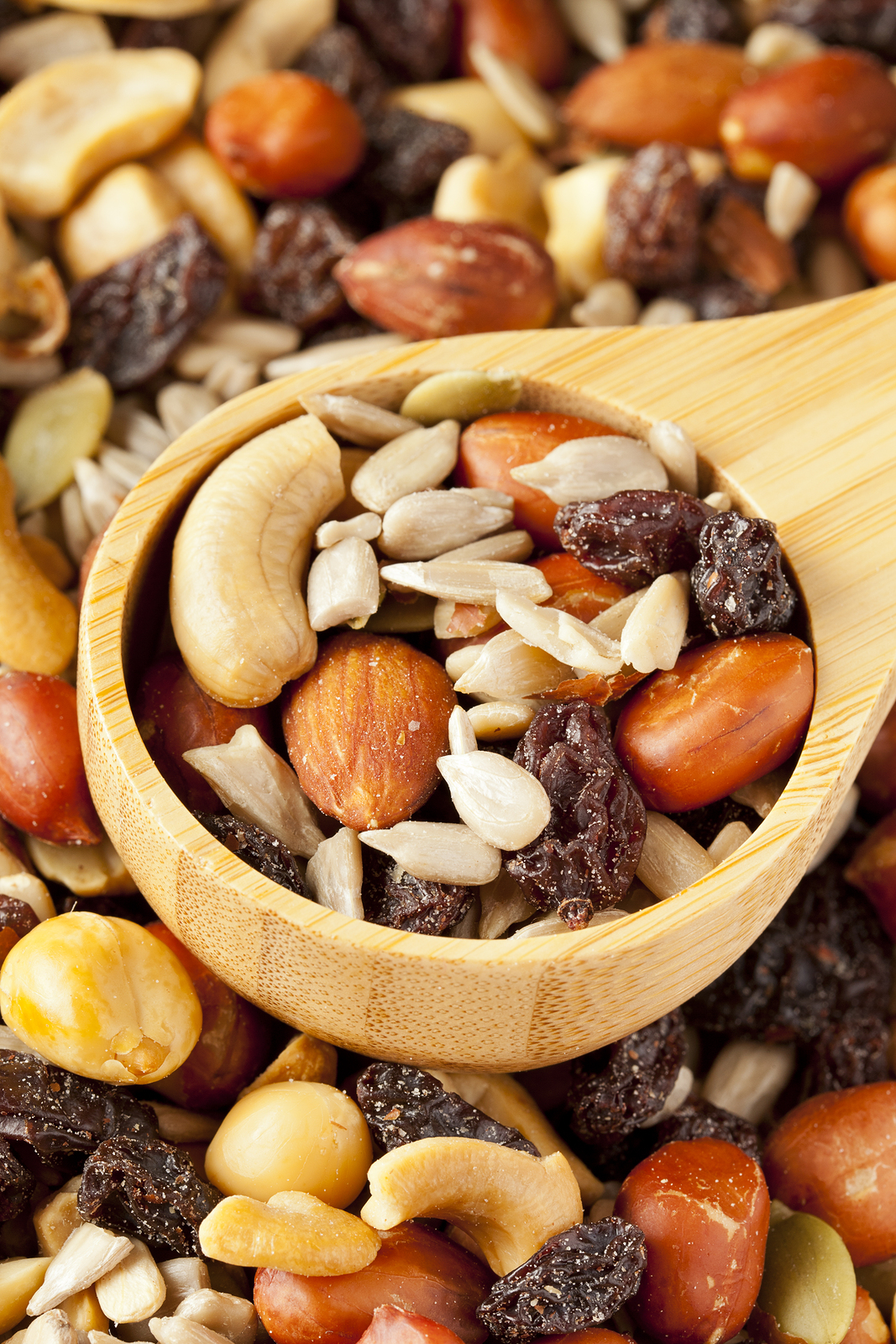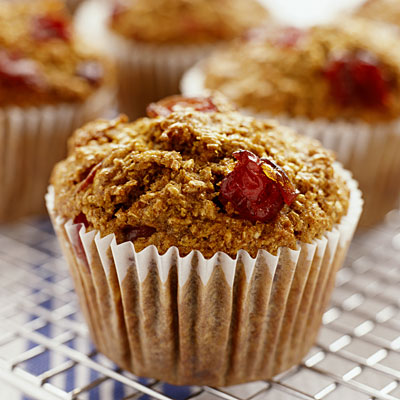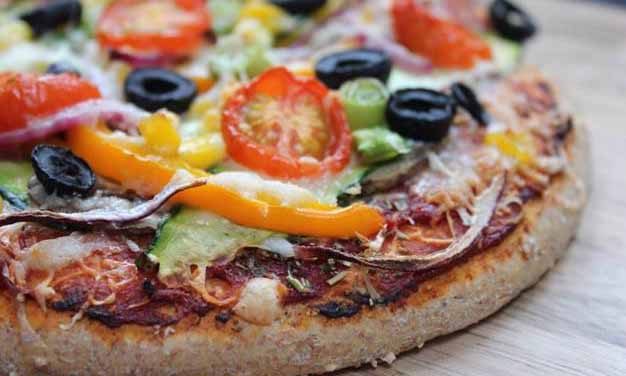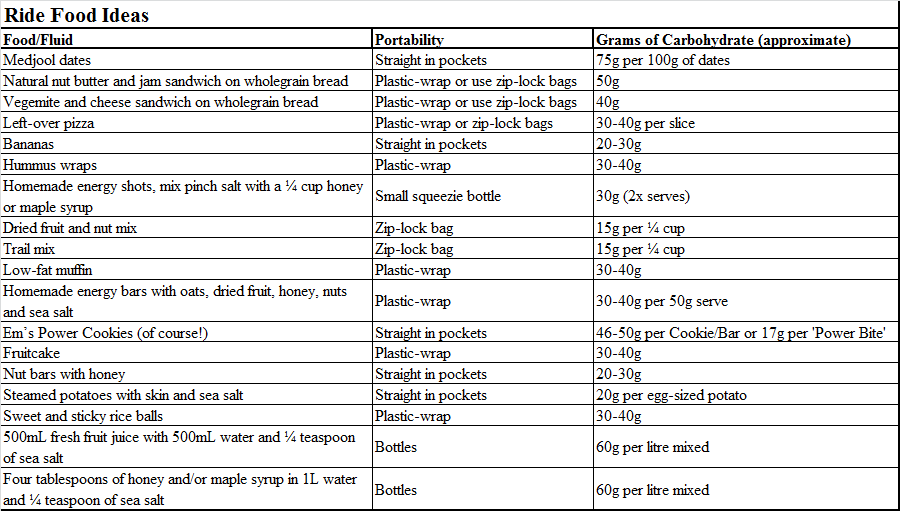Ride Food - Natural Alternatives
Our bodies need fuel to perform and optimising your food intake can make a big difference in how long you last on a big or strenuous ride. After all, there are few things worse than going ‘hunger flat’ mid-ride—those who’ve been there will understand.
So what’s it take to fuel yourself optimally? Do you need to stock up on highly processed and sometimes stodgy tasting sports nutrition products or are there alternatives?
For athletes who are training hard and racing, sports nutrition products play an important role for fuelling and recovery. They are great for their convenience and it’s handy that the companies have already done the hard work of fine tuning the balance of electrolytes, carbohydrates and proteins. All you need to do is pack your pockets and ride.
Some companies have even gone to the effort of ensuring their products are palatable and don’t cause stomach upsets, but not all unfortunately. The key is to find foods that taste good and don’t cause stomach upsets when consumed correctly. It’s certainly possible to find products that tick all the boxes and it tends to be a very personal choice.
Look beyond the purely competitive aspects of riding and it’s still best to eat well. The sheer convenience of sports drinks, gels and formulated energy and protein bars means they still hold a legitimate place but there are plenty good ‘real food’ alternatives that you may also want to try.
Even at the elite level, some riders prefer less processed foods. For example, Tour de France teams have had great success with exchanging formulated sports nutrition products for ‘real food’ alternatives. What would make the world’s best riders choose more natural options over marketed sports nutrition products? It’s likely that top riders have consumed vast amounts of specialist nutrition products over the years, and they simply want a change. I personally have always recommended and used a combination of real food and formulated sports nutrition products for hard training and racing.

What follows is an overview of the things you need to consider when searching for your ride food nirvana.
Carbohydrate
Carbohydrate is king. It is the macronutrient that drives our energy systems and fuels our cells, so it is important to be sure to include carbohydrate in your biking nutrition plan. Carbs are in all plant-based foods like rolled oats, grains, pasta, bread, rice, beans, fruits and vegetables as well as sugars like honey, maple syrup and table sugar. The recommendation for athletes is 80g of carbohydrate per hour but for easier recreational riding 50-60g carbs per hour should suffice.
Hydration
The other key player is hydration for cooling the body and keeping the correct fluid balance in cells, so they can function properly. Aim for 200-300ml fluid every 15-20 minutes. This leads to quite a broad range of 600ml to 1.2L per hour. The temperature will influence where you sit within this range as well as your efficiency in using water. It’s important not to over-drink, but it’s also important to listen to your body and at the very least drink to thirst. The fluid recommendation is a good guide to help keep you on track.

Electrolytes
Electrolytes include sodium, potassium, magnesium and calcium. Most formulated sports drinks include all of these in the correct amounts, but the main one to ensure you have enough of is sodium. This can easily be added to homemade concoctions by using a pinch of sea salt here and there. The recipe recommendation for drinks is a ¼ teaspoon of salt per litre of water. I used to play around with making my own sports drink but eventually found an off-the shelf product that I trusted and loved. For racing I didn’t feel comfortable using a homemade brew.
Protein
Protein is naturally occurring in starch-based carbs such as rolled oats, which is the main ingredient in my own products. Nuts are a great natural food that is high in protein. The role of protein is help build and repair tissue in the body but it is not needed so much in sports foods for fuelling (this is contrary to all the marketing that’s done around protein and branch-chain amino acids). Some formulated nutrition products contain processed whey or soy protein isolates—personally I don’t recommend them because they are not real foods and they often contribute to a chalky unpalatable flavour profile and can also cause stomach upset. Most people meet or exceed their protein needs just through normal diet, so I feel it’s best to keep the focus on carbohydrates for on-the-bike nutrition—the naturally occurring proteins found in carb foods and nuts will suffice.
Packaging & Practicalities
Ready to eat foods that can be plucked straight from your pockets are the best bet for harder rides, racing or if stopping is not an option. On longer or more sociable rides, feel free to mix in some of the other food ideas; pizza, hummus wraps or trail mix are great if you want to stop for a little picnic or if you’re likely to be waiting for friends who tend to lag behind. I have seen people in adventure races enjoying pizza in transitions and often thought, ‘what a great idea!’ While pizza can be incredibly satisfying, the high fat content (usually from the cheese and/or processed meat) means you should limit yourself to two slices on a longer ride.

I generally do not recommend store-bought muesli bars because they are highly processed and consequently are not as sustaining as real food energy bars. Chocolate bars run the risk of melting in your pockets and they are also a junk food, so I do not recommend them either.
The most important thing in working out your ride nutrition is to decide what flavours you enjoy and gravitate towards them. Consider using a mix of sports gels or your favourite energy bar as well as some homemade options to change things up a little. Sometimes this is all that is required to keep the balance of energy right and to keep your tummy happy. Always try to eat something every hour and stick to the fluid recommendations that I outlined.
My ‘real ride food’ ideas are simply a few suggestions that should serve to get you thinking. You’ll also find countless recipes on the internet for homemade energy snacks that can easily be adapted for riding. There are some yummy ‘bliss-ball’ recipes and the wonders of chia seeds are proving to be a great power-food for putting into homemade snacks. Just be sure to stick to lower-fat recipe options because too much fat or oil (particularly coconut oil) can displace the all-important carbohydrate you need for fuelling. So experiment with different flavours, adapt to suit your needs and keeping pedalling!

Emily Miazga is a practising nutritionist (M.Sc. Clinical Nutrition) and successful multi-sport athlete (three times Speight’s Coast to Coast World Multisport Champion). She developed her own energy bars to fuel her adventures and now sells Em’s Power Cookies across both Australia and New Zealand. www.velovita.com.au





